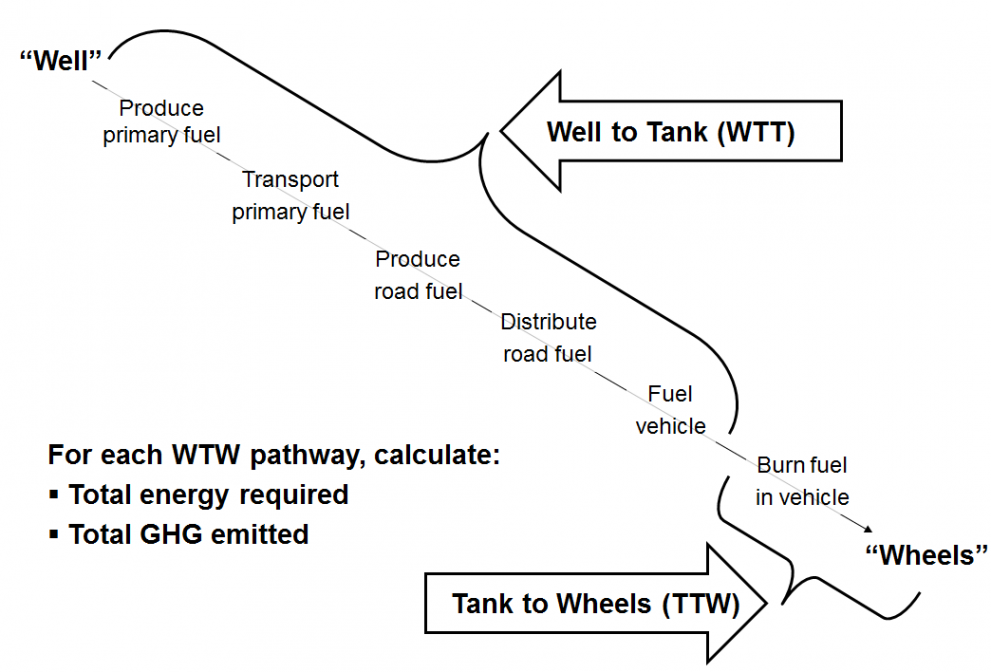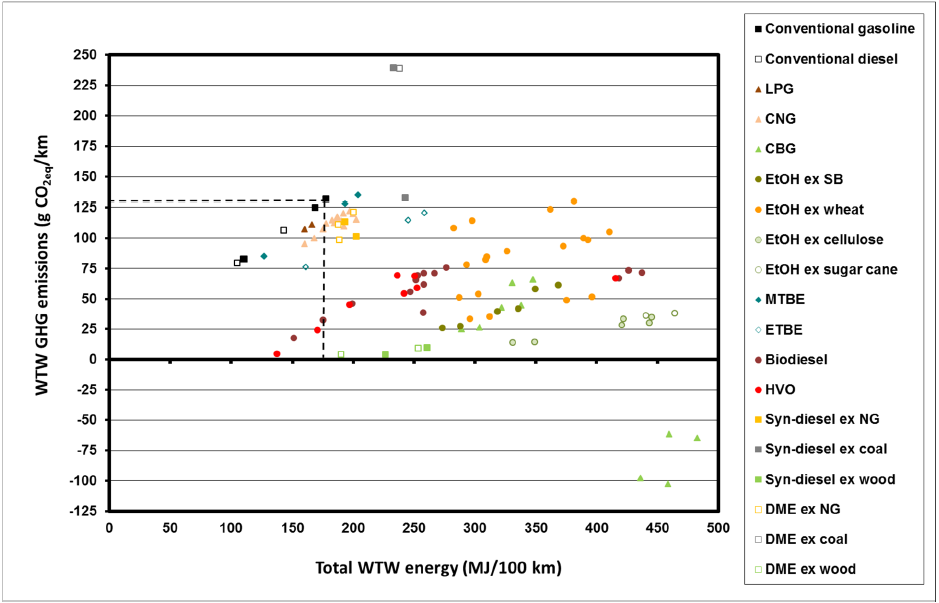Objectives
The well-to-wheels analyses by JEC pursue the objectives of estimating:
- greenhouse gas emissions,
- energy efficiency and
- industrial costs
of a wide range of automotive fuels and power-trains options significant for Europe in 2020 and beyond.

The outcome serves as a sound and broadly accepted scientific reference.
- WTW differs from a Life Cycle Analysis (LCA), as it does not consider energy and emissions involved in building facilities and the vehicles, or end of life aspects.
- WTW analysis focuses on and – TTW), that is the major contributors to lifetime energy use and GHG emissions.
- No estimates of overall “costs to society” such as health, social or other speculative cost areas are made.
- Assumes all plants and vehicles to meet current and incoming future regulations. When considering regulated pollutants, all plants and vehicles are assumed to meet current and incoming future regulations.
Key messages
The methodology and data-set developed to provide a basis for the evaluation of pathways needs updating keeping pace with technological development and innovation.
A shift to renewable/low fossil carbon routes may offer a significant GHG reduction potential but generally requires more energy -->The specific pathway is critical.
A shift to renewable/low carbon sources is expensive: GHG emission reductions always entail costs but high cost does not always result in large GHG reductions
No single fuel pathway offers a short term route to high volumes of “low carbon” fuel
- Contributions from a number of technologies/routes will be needed
- A wider variety of fuels may be expected on the market
- Blends with conventional fuels and niche applications should be considered if they can produce significant GHG reductions at reasonable cost.
There is a range of options for vehicles designed to use grid electricity. While electric propulsion in the vehicle is efficient, the overall energy use and GHG emissions depend crucially on the source used to produce electricity.
The GHG emissions reduction potential of hydrogen routes is critically dependent on fuel cell vehicles achieving their expected efficiency
Transport applications may not maximize the GHG reduction potential of renewable energies
- Optimum use of renewable energy sources such as biomass and wind requires consideration of the overall energy demand including stationary applications.
Results need to be further evaluated in the context of volume potential, feasibility, practicability, costs, and customer acceptance of the pathways investigated.
Relevance of WTW Analysis
The JEC well-to wheels analysis provides a technology and policy-neutral methodology to grasp the implications and issues at stake with each technological pathway by considering performance with regard to both greenhouse gas emissions reduction and energy efficiency enhancement.

